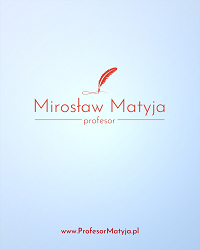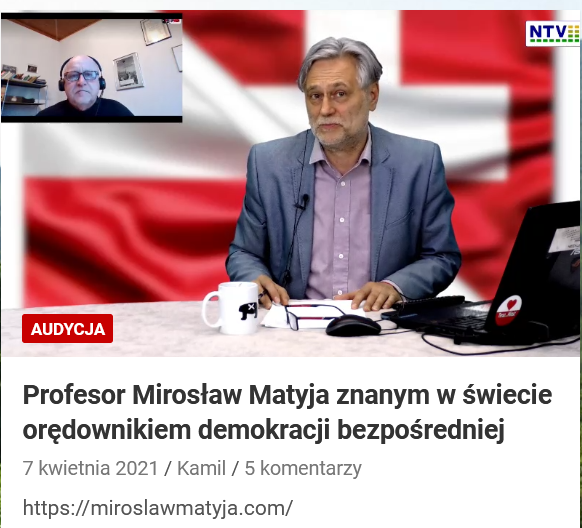Use of Interactive Radio Instructional Broadcast for Primary School Pupils in Lagos State
Abstract
This study examines the use of Interactive Radio Instruction Broadcast (IRIB) as a tool for enhancing primary education in Lagos State, Nigeria. Amid challenges such as overcrowded classrooms, inadequate teaching personnel, and disruptions to traditional learning systems, especially during crises like the Covid-19 pandemic, radio has re-emerged as a viable medium for delivering education to hard-to-reach and underserved populations. This research investigates the accessibility, content quality, learner engagement, and educational outcomes associated with IRI among primary school pupils in Lagos State. The paper is a conceptual paper that utilises secondary data from the existing literature like scholarly books, journal articles, internet materials and media publications. The paper employs the Pedagogical Content Knowledge (PCK). This theory is relevant to this study as it charts a framework to understand how teachers can effectively integrate subject knowledge with appropriate instructional strategies when using Interactive Radio Instruction (IRI) for primary school pupils in Lagos State. The paper argued that while IRI holds significant promise in promoting foundational literacy and numeracy skills, its impact is moderated by factors such as fund, parental support, broadcast duration, electricity supply and poor signals. The paper concludes that the use of Interactive Radio Instructional Broadcast (IRIB) has proven to be a valuable educational tool for reaching primary school pupils in Lagos State, particularly in contexts where access to conventional classroom learning is limited. This paper underscores the potential of radio as a cost-effective, scalable, and inclusive medium for delivering foundational education, especially in underserved and low-resource communities.
Keywords
Full Text:
PDFReferences
Adelabu, O. A., Chuks Iweriebor, B., Nwodo, U. U., Obi, L. C., & Okoh, A. I. (2017). Incidence and molecular characterization of hepatitis E virus from swine in Eastern Cape, South Africa. Advances in Virology, 2017(1), 1073253.
Aghadiegwu, U. C., & Ogbonna, U. A. (2015). The rise of hate and peace journalism in the Nigerian democratization process: the place of the new media. Communication Panorama African and Global Perspectives, 1(1).
Akinwale, A., & Oduwole, A. (2021). Learn at Home initiative in Lagos State: A COVID-19 education response. Journal of Educational Studies, 14(2), 45–58.
Bernard, J., Dupont, C., & Lavalle, F. (2021). La Maison Lumni: France’s educational response during the COVID-19 pandemic. European Journal of Educational Broadcasting, 9(1), 112–128.
Bhaskar, S., & Sukmaya, L. (2017). Radio as an Educational Tool in Developing Countries: Its Evolution and Current Usages. In International Conference on Developmental Interventions and Open Learning for Empowering and Transforming Society. Open University, Kaduna.
Boniface, H. S. (2023). Quantifying the Impacts of Climate-Smart Farming Practices for Improved Management and Long-Term Carbon Storage (Master's thesis, University of Maryland, College Park).
Brown, N. J., & Agba, J. U. (2015). From Analogue to Digital Image Technologies: Evaluating Emergence and Trends of Photojournalism in Nigeria. The International Journal of the Image, 6(4), 21.
Bruckner, T., & Schumacher, L. (2021). Media and education partnerships in Germany during COVID-19. German Educational Review, 13(3), 89–104.
Çam, Ş. S., & Erdamar, G. K. (2021). Technological pedagogical content knowledge practices in higher education: First impressions of preservice teachers. Technology, Knowledge and Learning, 26(1). https://doi.org/10.1007/s10758-019-09430-9
Carvalho, R., & Diniz, P. (2021). Educational broadcasting and digital inclusion in Brazil. Latin American Journal of Educational Technology, 18(2), 75–90.
Dwyer, T. (2016). Convergent media and the transformation of educational broadcasting. Media Studies Quarterly, 10(1), 20–35.
Edwards, J. T., & Helvie-Mason, L. (2010). Technology and instructional communication: Student usage and perceptions of virtual office hours. Journal of Online Learning and Teaching, 6(1), 174-186.
Fombona, J., Pascual, M. Á., & López, M. Á. (2017). New perspectives in educational broadcasting: Digital formats and interactive platforms. International Journal of Educational Technology, 4(3), 37–49.
Gagliardi, R., & Perrotta, C. (2017). Radio education and the roots of distance learning. Journal of Educational Media History, 2(1), 13–28.
Ilesanmi, O. S., Adebayo, O. A., & Afolabi, A. (2021). Reimagining distance education through broadcasting in Nigeria during the COVID-19 pandemic. African Journal of Education and Development, 15(4), 33–47.
Kultsum, U. (2017, August). The concept of pedagogical content knowledge (PCK): Recognizing the English teachers' competences in Indonesia. In 2nd International Conference on Innovative Research Across Disciplines (ICIRAD 2017) (pp. 55-59). Atlantis Press.
Maiwada, A. A., Aondover, P. O., Adewale, O. C., Falobi, F., & Onyejelem, T. E. (2025). Public Relations and Media Role in Peace Building in Nigeria. Budapest International Research and Critics Institute-Journal (BIRCI-Journal), 8(1), 45-58.
Mnguni, L., & Moyo, T. (2021). Woza Matrics and the role of public broadcasting in South Africa’s education. Southern African Education Review, 9(2), 44–60.
Nkwam-Uwaoma, A. O. (2016). Analysis of Performance of Television in Educational Broadcasting in Nigeria. Ebonyi State University Journal of Mass Communication, 3(1), 154-160.
Obiorah, D. C., & Okika, E. (2023). Interactive Radio Instruction (IRI) and Quality Assurance in Nigeria’ s Educational System: The Gains and Import of Policy Intervention. International Journal of Research and Innovation in Social Science, 7(11), 1128-1136.
Okeke, A. O., Nwosu, J. C., & Ono, G. N. (2021). Use of radio as a tool of learning in crisis period. Nnamdi Azikiwe University Journal of Communication and Media Studies, 1(2), 1–10.
Okonkwo, C., Musa, R., & Olayemi, B. (2020). The role of educational broadcasting in Nigeria’s literacy development. Journal of African Communication Studies, 7(1), 101–117.
Olakulehin, F. K. (2016). Impact of instructional radio delivery mode on academic achievement of distance learning students’ in computer science. US-China Education Review, 6(12), 688-698.
Olumorin, C. O., Aderoju, M. A., & Onojah, A. O. (2018). Students' awareness and utilization of educational broadcasts to learn in Ogbomoso, Oyo State, Nigeria. Turkish Online Journal of Distance Education, 19(3), 182–192. https://doi.org/10.13140/RG.2.2.15185.97127
Onabajo, F. (2005). Promoting indigenous culture and community life in Nigeria through the mass media. Studies of Tribes and Tribals, 3(2), 93-98.
Onyejelem, T. E., Aondover, P. O., Maradun, L. U., Chime-Nganya, C. R., & Akin-Odukoya, O. O. (2024). Media and Pictorial Reportage of Boko Haram Insurgency in Nigeria. Konfrontasi: Jurnal Kultural, Ekonomi dan Perubahan Sosial, 11(4), 287-299.
Oreoluwa, P. A., Vitalis, P. O., Nneka, A. Q., Collins-Dike, J., & Ridwan, M. (2024). Online Harassment of Female Journalist in Lagos State. Polit Journal Scientific Journal of Politics, 4(3), 162-174.
Rollnick, M., & Mavhunga, E. (2017). Pedagogical content knowledge. In Science Education (pp. 1–17). Springer. https://doi.org/10.1007/978-94-6300-749-8_37
Sakamoto, K. (2020). NHK’s educational broadcasting during COVID-19: Blending tradition and innovation. Asian Media and Education Journal, 8(2), 73–88.
Sarkar, M., Gutierrez-Bucheli, L., Yip, S. Y., Lazarus, M., Wright, C., White, P. J., Ilic, D., Hiscox, T. J., & Berry, A. (2024). Pedagogical content knowledge (PCK) in higher education: A systematic scoping review. Teaching and Teacher Education, 144(2), 104608. https://doi.org/10.1016/j.tate.2024.104608
Silmi, M. R. (2017). Types of Media and Teaching Techniques in Teaching Speaking At Smp Brawijaya Smart School Malang. Suar Betang, 12(2), 223-233.
Taylor, M., & Hall, S. (2020). PBS and equitable access to learning during the COVID-19 pandemic in the U.S. American Educational Media Journal, 15(3), 28–42.
Ufuophu-Biri, E., & Ijeh, N. P. (2021). The place of digital nativity and digital immigration on internet accessibility and usage by students and lecturers of tertiary institutions of learning in Delta State, Nigeria. Academic journal of interdisciplinary studies, 10(1), 214-227.
Umo, U. E., & Omenugha, K. A. (2019). Television and formal education in Africa: A historical analysis. African Media Education Review, 6(1), 33–49.
Vitalis, P. O., Amadi, R. N., & Whyte, D. H. (2024). Social Construct of Nollywood Films and Ethnocentrism in Southern Nigeria. CINEJ Cinema Journal, 12(2), 152-179.
Vitalis, P. O., Onyejelem, T. E., & Okuneye, A. P. (2023). Understanding advertising in the era of social media. Information System and Smart City, 3(1), 502-502.
Wamalwa, F., & Omollo, M. (2021). Radio education in Kenya: Closing the digital divide during school closures. East African Journal of Educational Broadcasting, 3(1), 57–70.
Wodi, J., & Okocha, F. (2021). Educational broadcasting in Nigeria during the COVID-19 lockdown: Achievements and challenges. Nigerian Educational Media Review, 10(2), 19–35.
World Bank. (2018). World Development Report 2018: Learning to Realize Education's Promise. Washington, DC: World Bank.
Zhou, Y., & Li, H. (2021). China’s national online learning strategy: Media and education integration during COVID-19. Journal of Chinese Educational Innovation, 9(1), 104–120.
DOI: https://doi.org/10.33258/birle.v8i2.8083
DOI (PDF): https://doi.org/10.33258/birle.v8i2.8083.g7940
Article Metrics
Abstract view : 0 timesPDF - 0 times
Refbacks
- There are currently no refbacks.

This work is licensed under a Creative Commons Attribution-ShareAlike 4.0 International License.

This work is licensed under a Creative Commons Attribution-ShareAlike 4.0 International License

_.gif)



















_.gif)



